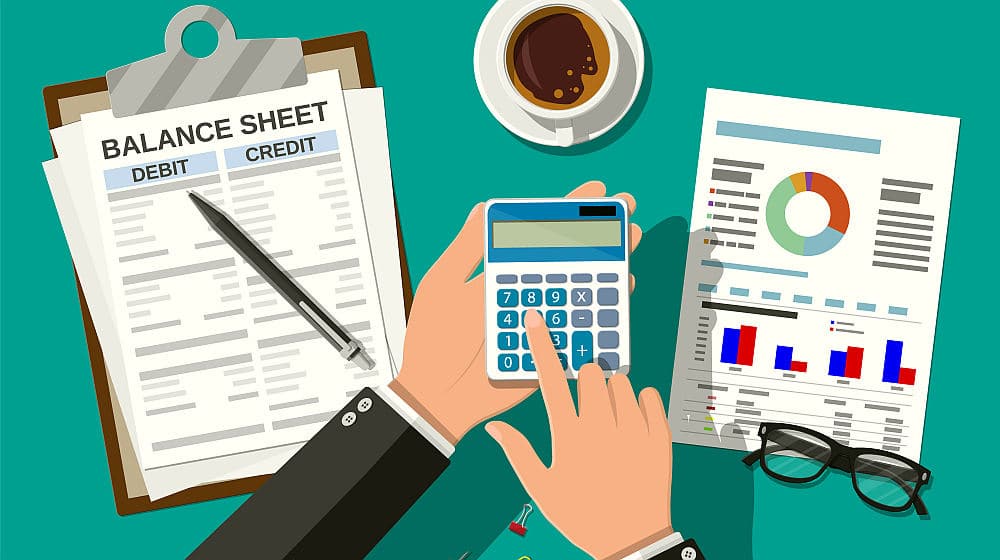Why Is Regular Account Reconciliation Important In Business?

Learn the importance of balance sheet account reconciliation and how to prepare it in this post.
RELATED: How To Measure Financial Performance Effectively
In this article:
- What Is Account Reconciliation?
- Importance of Account Reconciliation in Business
- The Balance Sheet Account Reconciliation Process
- Best Practices in Account Reconciliation Preparation
How to Prepare Account Reconciliation
What Is Account Reconciliation?
In account reconciliation, you compare information recorded in two systems or accounting records. The process includes:
- Analyzing the differences between the two
- Correcting inaccuracies
This ensures your financial information is accurate and consistent in both systems.
As a business owner, reconciling your balance sheet accounts periodically and on time is essential. This allows you to check if all transactions were accurately posted on the account.
In the reconciliation, include every balance sheet account fund, unless otherwise arranged.
Without regular balance sheet account reconciliation, you may suffer from incorrect transaction records. This results in inaccurate financial statements, which can negatively impact the business.
The controller’s office has the balance sheet accounts assignment’s master list. This reflects the following:
- Persons and units accountable on the completion of the monthly analysis of individual accounts
- Location of the supporting files (such as the documents and system)
- The accounts’ review period
The controller’s office also assigns people to perform periodic analysis on new accounts.
Importance of Account Reconciliation in Business

Financial information has a critical role in your business’ success. You need complete, accurate, and reliable financial data to make the right decisions that will help your business grow.
Arm yourself with the right data by adopting internal controls. This includes regular account reconciliations.
It may be a time-consuming tedious task, but it’s an essential accounting control.
Through regular account reconciliations, you can identify the following:
- Errors in bookkeeping — This includes unrecorded sales and any expense counted multiple times.
- Unrecorded bank account transactions — Includes fund transfers and service fees that weren’t posted on the account
- Property stolen— Some examples are payments made to fraudulent vendors and misappropriated inventories.
Regular account reconciliation gives you confidence that your financial information is reliable. Timely account reconciliations spare you from bad business decisions and help you succeed.
The Balance Sheet Account Reconciliation Process
Here is the four-step process in performing account reconciliation duties:
Step 1: Preparation of the Required Documentation
The first step is to prepare a work paper for each account in the balance sheet. This is where you’ll document the reconciliation solution, which includes:
- The account name and number of the balance sheet account
- The account’s purpose statement
- A short description of the debits and credits that regularly go through the account
- The accounting period wherein you’re completing the analysis
- Account presentation key — For instance, you’re showing credit as a negative or positive number.
- Account activity within the period — The account’s nature and monthly activity volume determine the presentation.
- Substantiation of the account’s end balance — Review the documents that support it.
- The name and contact number of the person preparing the account reconciliation
- The reconciliation’s date of completion
- A list of people (with contact details) whom you can reach if you have inquiries related to the account.
Update the account information when you make changes in processing and other data.
Step 2: Analysis

After you close every end of the month, do the following:
- Verify the opening balance using previous work papers. If it’s a new account, confirm that the balance was zero.
- Review each activity recorded under the account to ensure the detailed items are:
- Properly categorized to that specific account
- Authorized and compliant with state and federal laws, other policies, and regulations
- Compliant with the account’s purpose and guidelines
- Ensure all the receipts, charges, and other expected activities appear under the account.
- Make the appropriate and necessary substantiated adjustments to your financial records.
- Resolve the discrepancies or errors uncovered during the account reconciliation process. Follow up on their resolution to ensure that they’re all corrected.
- Keep copies of supporting documents relevant to the account’s activity.
- Verify the ending balance each time if the account reconciliation agrees with the balance in the general ledger.
Step 3: Analysis Review
At the end of every quarter, submit the account analysis to the controller’s office so they can review it. Their job is to verify that:
- The analysis includes all funds within that particular balance sheet account.
- The ending balances and the general ledger are in agreement.
- Supporting documents substantiate the ending balances.
- All account activities are reasonable and appropriate.
- There were steps taken to make corrections or in adjusting entries, if and only if necessary.
- The fund and reporting categories in the account were already assessed for retention.
Step 4: Retention of Documentation
At the end of the process, it’s important to keep supporting documents. You’ll need these until you’ve cleared unresolved items related to the account balance.
Follow the record retention guidelines when keeping supporting documents related to period activity. These include, but are not limited to, the following:
- Records of accounts receivable
- Cash receipts
- Journal entries
- Invoice for vendors
RELATED: How To Stick To A Budget: 9 Ways To Keep Track Of Expenses
Best Practices in Account Reconciliation Preparation

Businesses should know the best practices in account reconciliation report preparation. Follow these four tips to ensure the accuracy and timeliness of your reconciliation:
1. Prepare Reconciliations on Schedule
The frequency depends on the account’s risk of error.
- For high-volume accounts like cash account and accounts payable, do a monthly reconciliation.
- For accounts like fixed assets and loans payable, go for quarterly reconciliations.
2. Evaluate Items Under The Accounts
Evaluate all significant reconciling items under the accounts and make timely adjustments as necessary. These significant items include whatever amount that will affect how the owners, investors, or creditors decide.
3. Assign Different Auditors for Reconciliation Duties
Assign different individuals to prepare the reconciliation and to process the account’s initial transactions. These people should be different from those who verify the information and work on approval workflows.
4. File Account Reconciliations With Supporting Documents
Filing the accounts reconciliation along with the supporting documentation used for the adjustments will make it easier to substantiate the correction in an audit trail.
As a business owner, you shouldn’t disregard your account reconciliation duties. Doing so hinders informed decision-making and puts your business at risk.
Follow the account reconciliation process to reap the benefits of excellent business practices.
What challenges do you face when it comes to account reconciliation? Share them with us in the comments section below.
Up Next:




